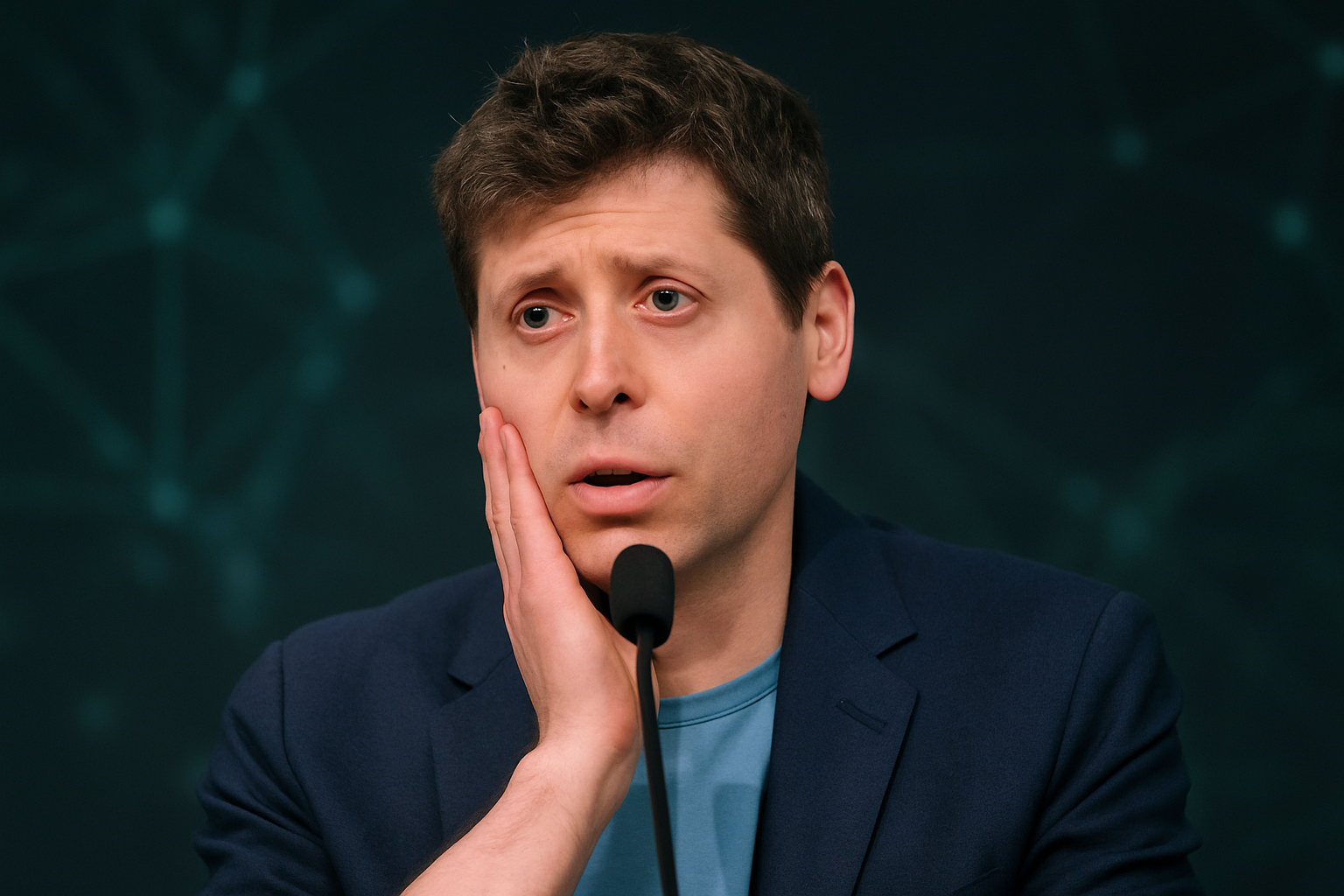In a world racing to build smarter machines, OpenAI’s latest breakthrough GPT-5 is set to redefine what artificial intelligence can do. But with this power comes a deeper question, have we ensured GPT-5 safety before unleashing it on the world? Even OpenAI’s CEO Sam Altman has publicly questioned the model’s impact, wondering aloud, What have we done?
The Arrival of GPT‑5: Power With a Price?
GPT‑5 is not just another upgrade it’s being touted as a model that can reason, plan, and even understand complex emotional cues better than its predecessors. OpenAI insiders hint that it will far surpass GPT‑4 in areas like coding, natural conversation, multilingual fluency, and real world task execution.
But as the model’s capabilities rise, so do the risks. From bias and hallucination to autonomous misuse, the potential for damage grows with each leap in power. That’s why GPT-5 safety is not just a technical challenge it’s a societal one.
Sam Altman, the architect behind much of OpenAI’s growth, admitted on record that GPT‑5’s intelligence scared him during testing. In a conversation with comedian Theo Von, Altman described how the model answered an email so effectively that he felt useless. It was a moment that exposed both awe and anxiety.
Geoffrey Hinton, one of the founding figures of modern AI, left his position at Google in 2023 to speak openly about the dangers of unchecked AI growth. He warned that models like GPT‑5 could be misused for everything from mass disinformation to autonomous cyber attacks.
His central concern? That industry development was moving far faster than any global regulatory system could keep up. Hinton’s warnings underscore a harsh reality, without enforceable global oversight, the fate of AI safety lies largely in the hands of the companies building it.
Academic Insights on Alignment and Control
Recent peer reviewed studies from institutions like MIT and Stanford stress the need for alignment strategies techniques to ensure AI systems follow human values. Safety training, behavior control layers, and adversarial testing are all being proposed as defenses.
Yet, the public still knows very little about how much of this has been applied to GPT‑5. Has GPT-5 safety really been tested across the edge cases where most risks emerge?
When GPT‑4 was released, companies quickly rushed to implement it in legal, healthcare, and educational tools. One legal tech firm integrated GPT‑4 into a document assistant, only to find it confidently cited non existent court rulings so called hallucinations.
That error nearly led to a client lawsuit. If such flaws were overlooked in GPT‑4, how can we trust that GPT-5 safety will fare better especially with far more complexity under the hood.
As a startup founder working on AI-powered customer service chatbots, I saw the effects of safety oversights firsthand. Our GPT‑4 integration seemed flawless until a single inappropriate response jeopardized a major client deal. We shut down the product for six weeks just to overhaul the safety layer.
That incident taught me a harsh truth: no matter how impressive an AI model is, its failure modes must be predictable, containable, and explainable. Without those guardrails, you’re not releasing a product you’re playing Russian roulette.
What OpenAI Has (and Hasn’t) Said About Safety
OpenAI has mentioned that GPT‑5 has undergone extensive internal red teaming, where its vulnerabilities are stress tested by safety teams. But so far, there has been no mention of, Independent external audits, Transparent release of risk assessments, Regulatory oversight or third party review
Altman himself has called for international regulatory bodies to govern frontier models like GPT‑5, even suggesting something akin to the International Atomic Energy Agency. But this proposal comes after the model’s development not before.
The contradiction is striking: if we agree AI needs global oversight, why hasn’t it been implemented before the most powerful models go public? Is There Hope for Safe AI? Despite the fears, not all experts are pessimistic.
Dr. Fei-Fei Li, Stanford AI researcher and AI4ALL co-founder, remains optimistic. She believes we can build interpretable and controllable AI models that can explain their logic and resist manipulation. Her lab is working on human centered AI models that factor in ethics, fairness, and cultural sensitivity.
If GPT‑5 includes even fragments of this philosophy, there’s hope. But if GPT-5 safety is still being treated as a post launch concern, it could have long term consequences we’re not ready to handle.
A Launch Filled With Promise and Peril
The launch of GPT‑5 should be a moment of celebration for human ingenuity. But it’s also a moment of reckoning. We’re no longer talking about tools we’re shaping systems that could influence law, politics, medicine, education, and even human relationships.
And if even the CEO behind it admits fear, the rest of us should listen. GPT-5 safety is not a checkbox. It’s a constant, evolving commitment to ensuring AI serves everyone not just a privileged few, and not just short term profits.
Altman’s haunting words What have we done? may not be an expression of regret. They might just be the wake up call we desperately need.

